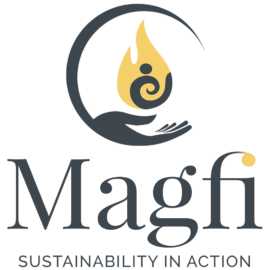Net Zero Food System
We will enable the transition to a net zero food system, measuring and quantifying the change through reduced CO2 equivalent emissions.

The food system is responsible for almost a third of greenhouse gas emissions, with connected challenges such as food waste, resource depletion and energy consumption. To reach net zero and mitigate the impacts of the climate crisis, we must scale a systems approach to change that enables the transition to sustainable and regenerative agriculture practices, creates new markets and opportunities for food waste and loss reduction, and empowers all stakeholders to play an active role in the circular food economy.
Want to learn more about the opportunities to achieve a net zero food system?
blog
The agrifood industry has created many problems, but these challenges also come with many opportunities for innovation and change. The global community is working towards improving the food system, but different actors have to be involved:…

Top 3 Women Entrepreneurs in the Agrifood Space
April 09, 2019
blog
https://www.eitfood.eu/blog/post/the-women-innovators-transforming-the-food-systemWhen we look at the number of women entrepreneurs that receive funding in Europe, it's still less than 6-7% says Severine Balick, food and agtech VC at…
blog
Shockingly, we dispose of a third of all the food we produce and a lot of food waste is linked to 'date marking'. Maria Hidalgo, Co-Founder and CEO ColorSensing, is on a mission to change this with her startup ColorSensing. Discover how…
blog
The industrialisation of the agricultural sector has brought with it a large increase in the number of pesticides we use to protect plants and humans from various diseases. However, these same pesticides can also have a large number of…
Latest related news
Looking for more content related to Net Zero Food System?
Related start-ups in our network
blog
It is clear that we need to provide alternatives to the current meat production system. In this video, researcher Giuseppe Scionti, Founder and CEO of NovaMeat takes you on a visit to his workplace where his new food technology first came…

Feeding the World and the Role of Vertical Farming
February 28, 2019
blog
In 2017, the United Nations (UN) Department of Economic and Social Affairs reviewed global demographic trends and concluded a forecast of the world population to reach 9.8 billion in 2050. The outlook on an increase in population of…

Food Industry Encouraged to Innovate with New Novel Food Regulation
February 20, 2019
blog
The term novel food may sound simple, but it’s much more than that. Chia seeds were once isolated to impoverished regions of Central and South America, and milk once only had a shelf life of 12 days. But thanks to the power of the novel…
project
Improving communication of food health claims. This project builds on a previous programme of work to engage consumers and manufacturers on the wording of food health claims, with the aim of increasing consumer confidence and trust.
project
Sugar reduction in foods remains challenging; it is not only the sweetness of sugar but also physiochemical properties and cost that have to be matched.
project
Improving European farmers' competitiveness through technology transfer and innovation integration is essential to address future challenges in the sector. Increasing wheat grain quality and yield and enabling sustainable intensification…

project
We aim to design innovation led packaging for red meat, fish & poultry made from material derived from agrifood waste. The issue of waste plastic in the food industry has led to strong consumer demand for producers & retailers to…
project
Packaging needs to become more sustainable!
Related partners
Agri-EPI Centre
United Kingdom

Magfi
Malta

Scottish Association for Marine Science (SAMS)
United Kingdom

Milcoop
Italy

Aarhus University
Denmark
blog
The agrifood industry has created many problems, but these challenges also come with many opportunities for innovation and change. The global community is working towards improving the food system, but different actors have to be involved:…

Top 3 Women Entrepreneurs in the Agrifood Space
April 09, 2019
blog
https://www.eitfood.eu/blog/post/the-women-innovators-transforming-the-food-systemWhen we look at the number of women entrepreneurs that receive funding in Europe, it's still less than 6-7% says Severine Balick, food and agtech VC at…
blog
Shockingly, we dispose of a third of all the food we produce and a lot of food waste is linked to 'date marking'. Maria Hidalgo, Co-Founder and CEO ColorSensing, is on a mission to change this with her startup ColorSensing. Discover how…
blog
The industrialisation of the agricultural sector has brought with it a large increase in the number of pesticides we use to protect plants and humans from various diseases. However, these same pesticides can also have a large number of…
blog
It is clear that we need to provide alternatives to the current meat production system. In this video, researcher Giuseppe Scionti, Founder and CEO of NovaMeat takes you on a visit to his workplace where his new food technology first came…

Feeding the World and the Role of Vertical Farming
February 28, 2019
blog
In 2017, the United Nations (UN) Department of Economic and Social Affairs reviewed global demographic trends and concluded a forecast of the world population to reach 9.8 billion in 2050. The outlook on an increase in population of…

Food Industry Encouraged to Innovate with New Novel Food Regulation
February 20, 2019
blog
The term novel food may sound simple, but it’s much more than that. Chia seeds were once isolated to impoverished regions of Central and South America, and milk once only had a shelf life of 12 days. But thanks to the power of the novel…
project
Improving communication of food health claims. This project builds on a previous programme of work to engage consumers and manufacturers on the wording of food health claims, with the aim of increasing consumer confidence and trust.
project
Sugar reduction in foods remains challenging; it is not only the sweetness of sugar but also physiochemical properties and cost that have to be matched.
project
Improving European farmers' competitiveness through technology transfer and innovation integration is essential to address future challenges in the sector. Increasing wheat grain quality and yield and enabling sustainable intensification…

project
We aim to design innovation led packaging for red meat, fish & poultry made from material derived from agrifood waste. The issue of waste plastic in the food industry has led to strong consumer demand for producers & retailers to…
project
Packaging needs to become more sustainable!


Loading more content...












